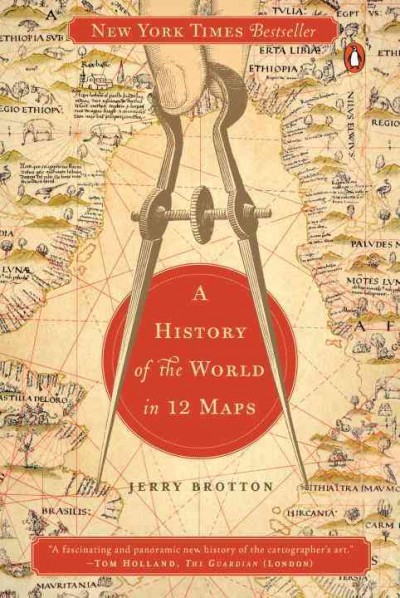 So what is the meaning of a world map? That is the deceptively complicated question that Brotton presents in his A History of the World in Twelve Maps. They are not really useful for navigation. If a person needs to find the best way to get to New York City they don’t reach for their Rand McNally wall map of the earth. Brotton essentially argues that world maps are efforts of humanity to project its view of the world, what is important to them in it and how that humanity wants the world to see them onto a piece of paper. Take any world map and look at it and it will tell you what is important to people who created or wanted it.
So what is the meaning of a world map? That is the deceptively complicated question that Brotton presents in his A History of the World in Twelve Maps. They are not really useful for navigation. If a person needs to find the best way to get to New York City they don’t reach for their Rand McNally wall map of the earth. Brotton essentially argues that world maps are efforts of humanity to project its view of the world, what is important to them in it and how that humanity wants the world to see them onto a piece of paper. Take any world map and look at it and it will tell you what is important to people who created or wanted it.
That is essentially what A History of the World in Twelve Maps is. Brotton takes twelve historical maps and dissects them to show what they say about the times in which they were created and the people who created them. Among the maps are the Hereford Mappa Mundi a world map drawn in the 14th century and putting east at the top of the map. This was normal in pre-1500 European maps since good things were thought to come from the east and bad things from the west. Conversely Islamic maps from the same time put south at the top of the map. At the time the first world maps were being drawn in the Islamic world they were mostly drawn in regions north of Mecca. They put south at the top reflecting the direction in which they turned to pray.
Other issues covered include the age old philosophical question of whether making a map is simply a mathematical exercise in which a surveyor brings the data to the cartographer and they draw the map. Or does the map maker actually have to see what he or she is drawing? There is also the myriad of ways cartographers over the ages have projected what is a round object onto a flat surface without distorting the image.
This book is a must for mapheads or people with an interest in cartography. History buffs might find it a little frustrating since the nature of what Brotton is doing requires him to bounce around without giving the reader and an in depth sense of time and place.


